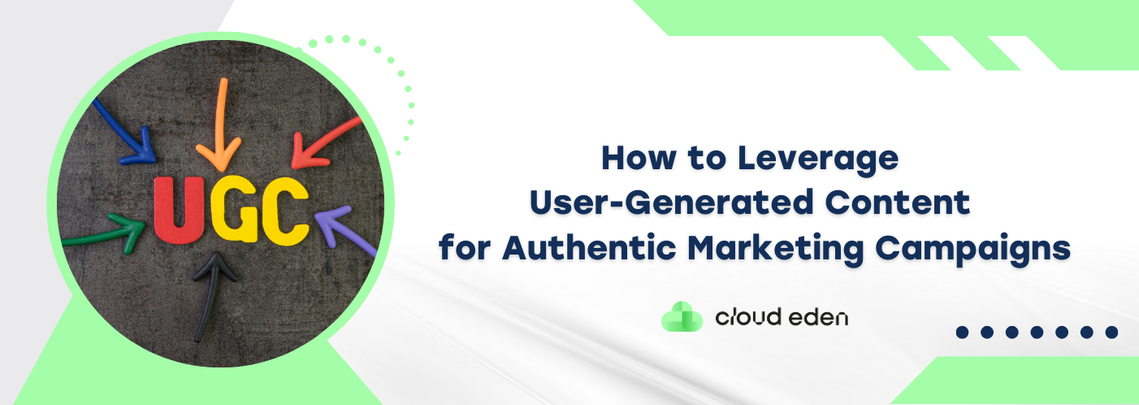How to Leverage User-Generated Content for Authentic Marketing Campaigns

Table of Contents
1. Introduction
- The Rise of Authentic Marketing
- The Role of User-Generated Content (UGC) in Authentic Marketing
2. The Power of User-Generated Content
- Social Proof and Trust Building
- Engagement and Relatability
3. Benefits of Leveraging User-Generated Content
- Increased Trust and Credibility
- Cost-Effective Marketing
- Enhanced Community Engagement
- SEO Benefits
- Increased Conversion Rates
4. Strategies for Leveraging User-Generated Content
- Encourage Reviews and Testimonials
- Create a Hashtag Campaign
- Host Contests and Giveaways
- Feature UGC on Your Website and Social Media
- Collaborate with Influencers and Brand Ambassadors
- Utilize UGC in Advertising
5. Best Practices for Implementing User-Generated Content
- Get Permission
- Give Credit
- Maintain Authenticity
- Monitor and Moderate
- Incentivize Participation
6. Real-World Examples of Successful UGC Campaigns
- GoPro
- Starbucks Red Cup Contest
- Coca-Cola's Share a Coke Campaign
- Lego Ideas
7. Conclusion
- The Impact of UGC on Brand Success
- Building a Loyal Community Through Authentic Engagement
In an era where consumers are increasingly skeptical of traditional advertising, authenticity has become a crucial element for successful marketing campaigns. One of the most effective ways to achieve this authenticity is by leveraging user-generated content (UGC). UGC includes any content—images, videos, reviews, testimonials, and social media posts—created by individuals rather than brands. This type of content not only adds credibility to a brand but also fosters a sense of community and trust among its audience. In this article, we'll explore how businesses can effectively leverage UGC for authentic marketing campaigns, delving into the benefits, strategies, and real-world examples.

The Power of User-Generated Content
User-generated content is a powerful tool for marketers. It serves as social proof, a psychological phenomenon where people mimic the actions of others in an attempt to reflect correct behavior in a given situation. When potential customers see real people enjoying a product or service, they are more likely to trust the brand and feel confident in making a purchase.
Moreover, UGC is often more engaging and relatable than
branded content. It's created by real people who share their genuine experiences, making it more relatable and trustworthy. This authenticity can lead to higher engagement rates, as audiences are more likely to interact with content that feels real and unscripted.
Benefits of Leveraging User-Generated Content
1. Increased Trust and Credibility
UGC provides an authentic voice that resonates with audiences, as it comes from genuine customers rather than the brand itself. This authenticity builds trust, making it easier for potential customers to believe in the brand's value proposition.
2. Cost-Effective Marketing
Creating high-quality content can be expensive and time-consuming. UGC offers a cost-effective alternative, as it relies on the creativity and experiences of customers. Brands can curate and share this content with minimal investment, reducing the need for extensive production costs.
3. Enhanced Community Engagement
Encouraging customers to create and share content fosters a sense of community and belonging. It turns passive customers into active participants in the brand's story, creating a more engaged and loyal customer base.
4. SEO Benefits
UGC can significantly enhance SEO efforts. When users create content that includes your brand's name, products, or services, it can improve your search engine rankings. Additionally, user reviews and testimonials often contain keywords that potential customers are searching for, helping to drive organic traffic to your website.
5. Increased Conversion Rates
According to a study by Nielsen, 92% of consumers trust recommendations from others over branded content. UGC acts as a form of word-of-mouth marketing, which is incredibly powerful in driving conversions. Seeing real customers enjoying a product can provide the final push needed to convert a potential customer into a paying one.
Strategies for Leveraging User-Generated Content
1. Encourage Reviews and Testimonials
One of the simplest ways to leverage UGC is by encouraging customers to leave reviews and testimonials. This can be done through follow-up emails after a purchase, offering incentives like discounts for leaving a review, or simply making it easy for customers to leave feedback on your website.
2. Create a Hashtag Campaign
Hashtag campaigns are a popular way to encourage
UGC on social media. By creating a unique and memorable hashtag, brands can encourage customers to share their experiences and tag the brand in their posts. This not only creates a wealth of content but also increases brand visibility on social media platforms.
3. Host Contests and Giveaways
Contests and giveaways are a great way to encourage customers to create content. For example, a brand can ask customers to share photos or videos of themselves using a product, with the best submission winning a prize. This not only generates UGC but also increases engagement and excitement around the brand.
4. Feature UGC on Your Website and Social Media
Featuring UGC on your website and social media channels can showcase the genuine experiences of your customers. This can be done by creating a dedicated section for
customer testimonials, sharing UGC on your social media feeds, or even creating a gallery of customer photos on your website.
5. Collaborate with Influencers and Brand Ambassadors
Influencers and brand ambassadors can play a crucial role in generating UGC. By partnering with individuals who have a strong following and align with your brand values, you can reach a wider audience and encourage their followers to create and share content as well.
6. Utilize UGC in Advertising
Incorporating UGC into your advertising campaigns can make them more authentic and relatable. For example, using customer photos in Facebook ads or featuring customer testimonials in video ads can add a layer of credibility that traditional advertising lacks.

Best Practices for Implementing User-Generated Content
1. Get Permission
Before using any UGC, it's crucial to get permission from the content creator. This not only respects their intellectual property but also fosters a positive relationship with your customers.
2. Give Credit
Always give credit to the original creators of the content. This not only shows appreciation but also encourages others to create and share content, knowing they will be recognized for their efforts.
3. Maintain Authenticity
While it's tempting to curate UGC to fit a specific brand image, it's important to maintain authenticity. Avoid editing or altering content in a way that misrepresents the original message. Authenticity is key to building trust and credibility with your audience.
4. Monitor and Moderate
Not all UGC will align with your brand values or messaging. It's important to monitor and moderate the content being shared to ensure it aligns with your brand's image and values. This includes filtering out any inappropriate or harmful content.
5. Incentivize Participation
While many customers are willing to share their experiences without any incentive, offering a reward can encourage more participation. This could be in the form of discounts, exclusive offers, or even recognition on your social media channels.
Real-World Examples of Successful UGC Campaigns
1. GoPro
GoPro has mastered the art of leveraging UGC. The company encourages customers to share their adventure videos using the hashtag #GoPro. This has resulted in a wealth of high-quality content showcasing the versatility of GoPro cameras. The brand often features these videos on its social media channels and website, providing both inspiration and proof of the product's capabilities.
2. Starbucks Red Cup Contest
Starbucks has a long history of successful UGC campaigns, one of the most notable being the Red Cup Contest. The coffee giant encourages customers to decorate their red holiday cups and share their designs on social media using a specific hashtag. This not only generates a large amount of content but also creates a sense of excitement and community among Starbucks fans.
3. Coca-Cola's Share a Coke Campaign
Coca-Cola's "Share a Coke" campaign involved printing popular names on their bottles and encouraging customers to find and share photos of their personalized bottles. This campaign was a huge success, generating a massive amount of UGC and increasing Coca-Cola's sales and brand visibility.
4. Lego Ideas
Lego's "Lego Ideas" platform allows fans to submit their own Lego set designs. If a design receives enough votes from the community, it may be turned into an official Lego set. This not only generates a wealth of UGC but also engages the community and gives fans a sense of ownership and involvement in the brand.
Conclusion
Leveraging user-generated content is a powerful strategy for creating authentic marketing campaigns. It builds trust, fosters community engagement, and provides a cost-effective way to generate high-quality content. By encouraging reviews, creating hashtag campaigns, hosting contests, and collaborating with influencers, brands can tap into the creativity and authenticity of their customers. As we have seen from real-world examples, the key to a successful UGC campaign is maintaining authenticity, giving credit, and encouraging participation. By implementing these strategies, brands can harness the power of UGC to create compelling and authentic marketing campaigns that resonate with their audience.
Incorporating these strategies and best practices can help businesses establish authority and expertise in their field, making them more relatable and trustworthy to their audience. By consistently engaging with customers and encouraging them to share their experiences, brands can build a loyal community and drive long-term success.
Welcome To Our Blog





